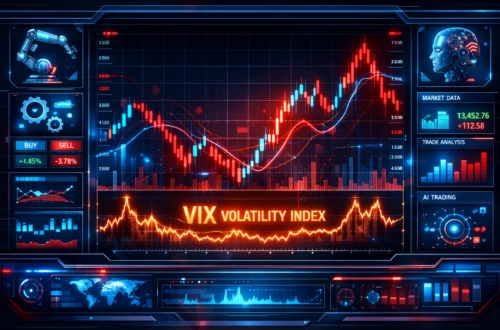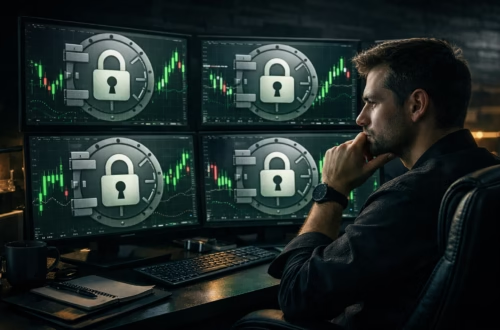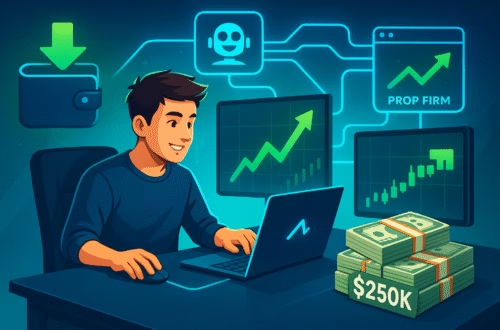Understanding Paper Trading: Bridging the Gap Between Simulated and Live Trading @ United States America (USA)
Introduction
Paper trading, a risk-free simulation of the stock market, provides traders an invaluable opportunity to test their strategies without financial consequences. While it’s a fantastic learning tool, it’s not without its limitations. Discrepancies such as slippage and commission fees often lead to differences between simulated and live trading results. To bridge this gap, incorporating realistic costs and conducting walk-forward testing with real capital is essential. This post will delve into these aspects, helping you navigate the transition from paper trading to live trading seamlessly.
What You’ll Learn:
- The fundamentals of paper trading.
- Common discrepancies in paper trading versus live trading.
- Strategies to incorporate realistic costs.
- The importance of walk-forward testing with real capital.
- Practical tips for successful transition to live trading.
Ready to dive in? Let’s get started.
The Fundamentals of Paper Trading
Paper trading, also known as simulated trading, allows traders to practice buying and selling securities without risking real money. This form of trading uses virtual money and mirrors real market conditions, making it an excellent way for beginners to learn and for experienced traders to test new strategies.
Benefits of Paper Trading
- Risk-Free Environment: No real money is involved, so there’s no financial risk.
- Strategy Testing: Test new strategies to see how they would perform in real market conditions.
- Skill Development: Improve your trading skills and gain confidence.
Common Discrepancies in Paper Trading vs. Live Trading
Despite its benefits, paper trading isn’t perfect. Several factors can cause discrepancies between simulated and live trading outcomes:
Slippage
Slippage occurs when there’s a difference between the expected price of a trade and the actual price at which the trade is executed. In live trading, market conditions can cause slippage, especially in fast-moving markets or with large orders. Paper trading platforms often do not simulate this accurately.
Commission Fees
Real trading involves commission fees and other transaction costs that can significantly affect your profitability. Many paper trading platforms do not account for these expenses, giving a skewed view of potential profits.
Market Impact
In live trading, large trades can impact the market price, especially in less liquid markets. This is often not reflected in paper trading.
Emotional Factors
Trading with real money can evoke strong emotions, such as fear and greed, which can influence decision-making. Paper trading lacks this psychological component, leading to different trading behaviors.

Incorporating Realistic Costs in Paper Trading
To make paper trading more reflective of live trading, it’s crucial to incorporate realistic costs:
Simulate Slippage
Adjust your paper trades to include slippage. For instance, if you’re buying at $50, consider adding a small margin (e.g., 0.1%) to simulate slippage.
Include Commission Fees
Factor in the commission fees you would pay in real trading. This gives you a more accurate picture of your net profitability.
Adjust for Market Impact
If you plan to trade in large volumes, simulate the potential market impact. Consider placing partial orders or adjusting prices to reflect how a large trade might move the market.
Factor in Taxes
Don’t forget taxes. Depending on your location, taxes on capital gains can significantly affect your overall returns.
Conducting Walk-Forward Testing with Real Capital
While paper trading is invaluable, transitioning to live trading requires another layer of validation. Enter walk-forward testing with real capital.
What is Walk-Forward Testing?
Walk-forward testing involves applying your trading strategy in a live market with real money but on a smaller scale. This helps you understand how your strategy performs in real market conditions, with real emotions and costs factored in.
Steps for Walk-Forward Testing
- Start Small: Begin with a small amount of capital to minimize risk.
- Monitor Performance: Track your trades closely, comparing them to your paper trading results.
- Adjust Strategies: Make necessary adjustments based on live trading performance.
- Gradually Increase Capital: As you gain confidence and see consistent results, gradually increase your trading capital.
Benefits of Walk-Forward Testing
- Realistic Feedback: Provides real-world performance data, including all costs and emotional factors.
- Strategy Refinement: Helps fine-tune strategies for better performance.
- Confidence Building: Builds confidence in your trading strategy before scaling up.
Practical Tips for Transitioning to Live Trading
Transitioning from paper trading to live trading can be daunting. Here are some practical tips to ease the process:
- Set Realistic Expectations: Understand that live trading will have its ups and downs. Be prepared for this mentally and financially.
- Continue Learning: The market is always changing. Keep learning and adapting your strategies.
- Risk Management: Always use risk management techniques to protect your capital.
- Seek Mentorship: Consider finding a mentor or joining a trading community for support and advice.
FAQs
What is the main purpose of paper trading?
Paper trading allows traders to practice and test strategies in a risk-free environment using virtual money.
How can slippage affect my trades?
Slippage can cause the actual execution price of a trade to differ from the expected price, impacting profitability.
Why is it important to include commission fees in paper trading?
Walk-forward testing involves using real money on a small scale to validate trading strategies in live market conditions.
How can I manage risks when transitioning to live trading?
Use risk management techniques such as setting stop-loss orders, diversifying your trades, and starting with a small amount of capital.
Final Thoughts
Bridging the gap between paper trading and live trading requires more than just practice. By incorporating realistic costs and conducting walk-forward testing, you can ensure your strategies are robust and ready for the real market. Remember, the transition to live trading is a journey, so take it one step at a time, continuously learn, and adapt. PickMyTrade currently operated in United States America (USA).



